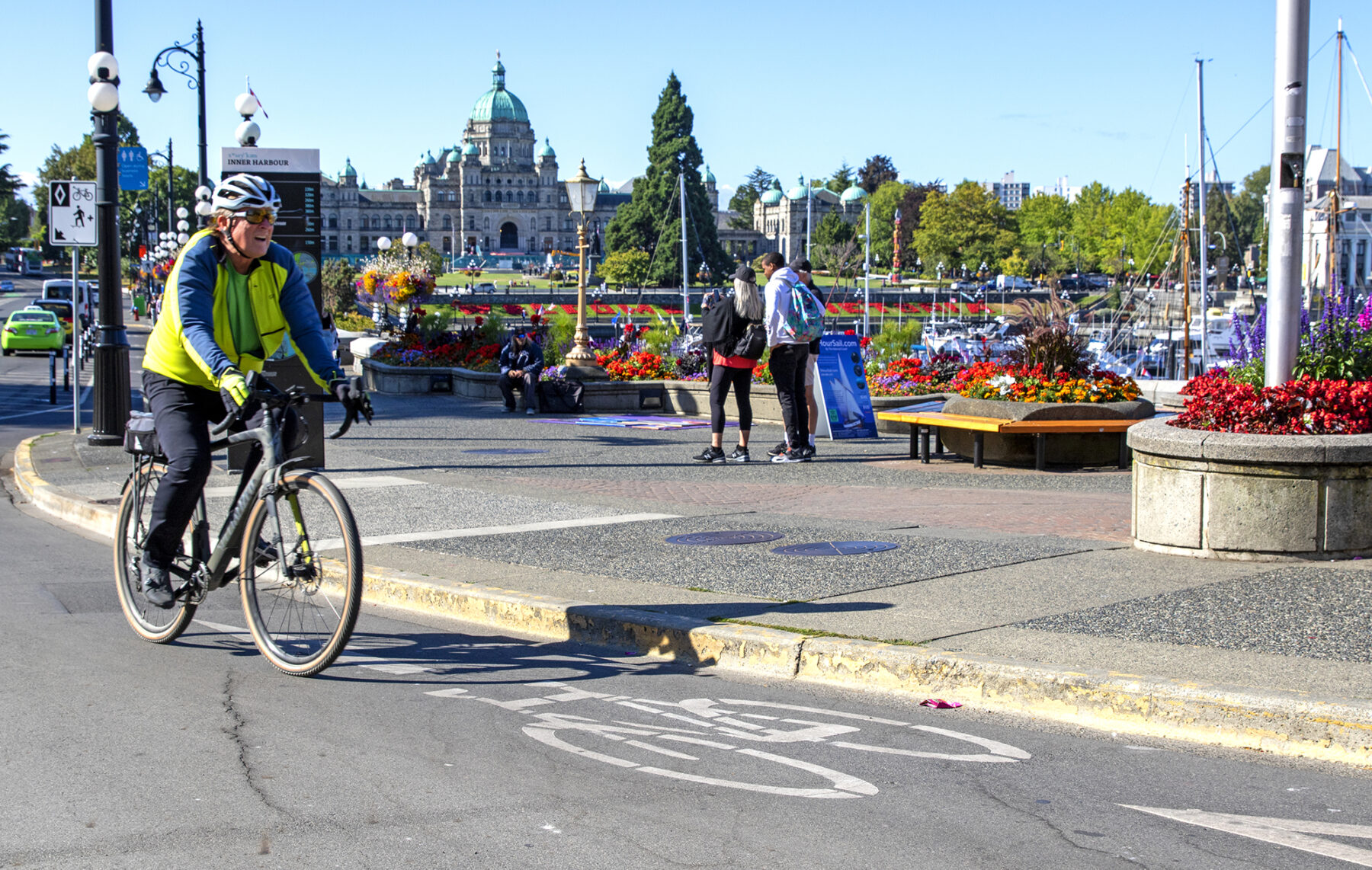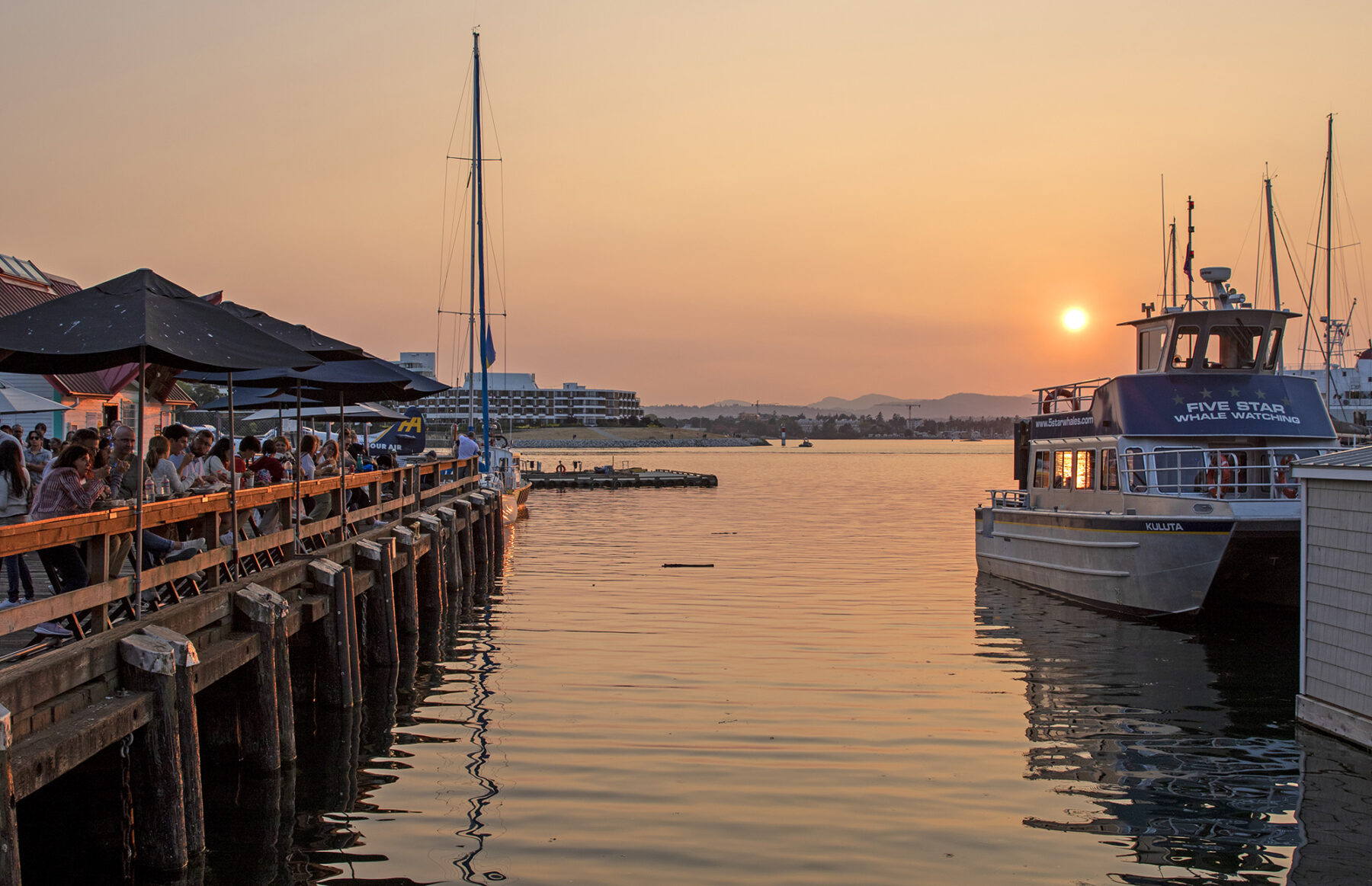On the shores of the busy inner harbour in Victoria, Vancouver Island, a digitised counter tallies the number of passing bicycles. As the sun sets on my riding day, the count is at almost 2500 bikes for the day and approaching 400,000 for the year. And it’s only August. For a city of just 90,000 people, it’s a clear advertisement for the power and popularity of cycling on Canada’s second-largest island.

Research in 2017 showed that almost 10% of all trips to, from and within the British Columbian capital were made by bike, but cycling here isn’t all about commutes. Trails and bike routes radiate like spokes from Victoria into the surrounding regions and towns, creating one of Canada’s best cycling networks. It’s quite feasible to base yourself in the city each night and explore the island’s southern reaches by bike.
On the rails
Like Australia and New Zealand, Canada has embraced the contemporary concept of rail trails. More than 30 railway lines across the country have been converted into cycling routes, and of the four such trails in British Columbia, two begin in Victoria.
The best starting point is the Lochside Trail, connecting Victoria to the town of Sidney, near the tip of the Saanich Peninsula. Launched in 2001 amid the rush of global rail-trail openings, the 29-kilometre path follows a spur line that was once part of a planned railway from Victoria to Port Alberni.

In the early morning I cruise out of Victoria along the inner harbour, leaving in tandem with seaplanes and whale-watch boats, the smell of marine paint thick in the air as the trail skirts the city’s dry dock.
At Victoria’s edge, the ride turns, rattling over the Selkirk Trestle, a century-old, 300-metre-long wooden bridge spanning the Gorge Waterway. Once a food gathering site for First Nations people, then inevitably a sewage dump for settlers, the narrow gorge is now filled with rowers, dragon boats, SUPs, seals and sea otters.
Just beyond the bridge, the trail forks, with the Lochside Trail turning right to begin its journey up the finger of the Saanich Peninsula. Crossing over the top of bird-hide-lined Blenkinsop Lake, the trail flickers from thickets of forest to rows of corn, with wild blackberries providing trail snacks in summer.
Around halfway to Sidney, the trail pops out onto quiet roads and open farmland. The main highway is a blur of movement beside me, but its hustle is nothing more than trailside scenery as I blow north on a tailwind that will be an anchor on my return.

Nearing Sidney, the planes of the nearby airport replace eagles in the sky, and soon I’m pedalling through the town, beelining for its pier, which is topped by a colourful fish market and restaurant and set beside a beach strewn with driftwood logs. As I peer out to sea, I’m looking not into Canada but the United States, with the border between the two countries swerving through the islands that dot the Strait of Georgia.
Talk to cyclists in Victoria and it’s always a second rail trail – the fairy-tale-sounding Galloping Goose – that dominates the discussion. Named for an unusual petrol-powered railway car that once operated between Victoria and Sooke, the Galloping Goose suitably attracts gaggles of bikes, at least around Victoria.
It rolls out of the city beside British Columbia’s Highway 1, shielded from view by the old railway levees. In the early morning, the path is filled with commuters and parents riding young kids to school. It’s a city preparing to work, though my own work will be 110 kilometres of cycling, taking me to the trail’s end in Sooke Potholes Provincial Park, near Vancouver Island’s southern tip, and back to Victoria.
As it parts from the freeway, it burrows through cuttings as deeply etched as canyons, with glimpses of farm buildings and paddocks through the cedar and fir forest. I couldn’t feel further from Victoria and yet I’m less than 30 kilometres from the city. And this Goose’s true beauties are still ahead.
As the ride swings west, Lake Matheson briefly appears below the trail, pinched between rocky bluffs. A few minutes on, I hit water again, only this time it’s the sea, with the trail taking to the northern shores of Rigby Cove, a lagoon-like bay that seeps deep into the island, to skirt the small town of Sooke.
The Galloping Goose’s star feature, and its turnaround point, is inland from Sooke. Through the valley that leads into Sooke Potholes Provincial Park, the trail crosses a series of old railway trestle bridges, and signs caution of recent bear sightings – the ultimate Canadian road hazard – though this day it’s empty of all but a few bikes and the occasional deer crossing the path around me.

At times the Sooke River is wide and beach-lined, and at other times it cuts a deep green line through razor-thin gorges connecting a daisy chain of deep pools that give the park its name and provide welcome swims at the midpoint of a long summer ride.
The pools aren’t the only liquid refreshment here. Returning to Sooke, less than 10 kilometres back along the trail, there’s the prospect of two craft breweries and the trailside Stickleback Oceanfront Cider and Taphouse, claiming to have the most beautiful deck on lower Vancouver Island. With yachts moored just offshore, bluffs of rock tumbling into the sea and a harbour seal cruising along the shore, it’s hard to argue. I have a few more hours of riding to come, but it can wait.
Garden runs
Places named Victoria don’t always have sexy slogans (hello ‘Victoria the Education State’), but BC’s capital has the bright and floral moniker of the Garden City. Suitably, a couple of its key gardens double as prime cycling destinations.
A great way to explore Victoria on two wheels is to follow its coastal trails to the lush gardens of Government House. As I set out riding one morning from the inner harbour, I’m quickly confronted by the strange urban sight of a deer crossing the main road. “Pretty brave deer given the price of beef at the moment,” a passing pedestrian quips as I stop to let the animal cross.
Along the coast I detour through Beacon Hill Park, home to the world’s tallest freestanding totem pole, and pass gravelly beaches so densely covered in driftwood they resemble firewood stacks. The coastal route heads as far east as suburban Oak Bay, where I turn back, weaving through the streets to Government House, the home of BC’s lieutenant governor and almost 15 hectares of gardens freely open to the public.
The gardens and house are wrapped inside another nine hectares of wild Garry oak forest – Canada’s only native oak species west of Manitoba – providing a rare look at the island ecosystem before the arrival of Europeans. The formal gardens are more manicured, with putting-green-worthy lawns dotted with giant conifers, oaks, rhododendrons, herb and rose gardens and the rarity of an alpine rock garden at sea level.

Surpassing Government House’s gardens – as a scene and as a ride – are the Butchart Gardens. Often ranked among the world’s most beautiful gardens, they’re a half-hour drive outside of Victoria, but also a popular (and better) trip on a bike.
The ride begins in now-familiar style – pedalling towards Sidney on the Lochside Trail. After 10 kilometres, the garden route veers away, taking to roads lined with farm veggie stalls and churches casual enough to call themselves St Mikes.
For the first time there are hills – the largest one capped with an astrophysical observatory and a posse of circling bald eagles – as the roads cut west across the peninsula to Butchart. Bike racks sit immediately beside the gates (take that, motorists!), making for quick entry into what might easily be labelled Canada’s prettiest industrial site. Once a limestone quarry and cement plant run by Robert and Jennie Butchart, it became Jennie’s dream to transform the quarry, which is today a national historic site and 22 hectares of gorgeous gardens visited by around one million people a year.
The return to Victoria presents options. I could ride back as I came, but this pocket of the Saanich Peninsula is also home to a cluster of seven wineries and, let’s be honest, cycling is thirsty work. Less than 3km from Butchart, Church and State Wines is Vancouver Island’s largest winery. On a deck looking straight down the lines of vines, I pause again for lunch – a menu of pizzas, bulgogi burgers and share plates, with more than a dozen wines available by the glass.

With a couple of glasses downed, I settle for a road-free return to Victoria, swinging onto the Interurban rail trail. This pathway is single-minded rather than scenic, functioning also as an access road for residents, though I see more snakes than cars. Soon, however, it frays into other cycling trails, and I settle on the longer, winding approach along the Glendale and Colquitz River trails, following a salmon-spawning waterway through a green corridor in keeping with my garden day.
Finally, I emerge beside Highway 1 again, back on the Galloping Goose. I turn, gather speed and ride once more with the gaggle into Victoria.
Fact Box
Bike hire (including touring bikes and ebikes), maps and plentiful riding information are available from Cycle BC , behind the harbourside Fairmont Express. Its website also has a guide to local routes, including those covered here. See Tourism Victoria for all info on this beautiful capital city.
Andrew travelled as a guest of Destination BC



